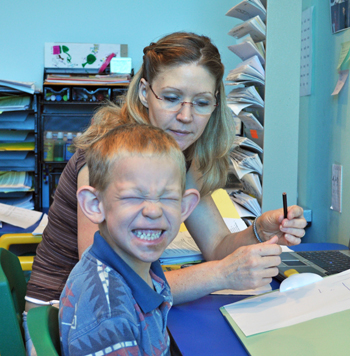
|
Pediatric Occupational, Physical, ABA/Behavioral, Feeding, Speech, and Language Therapies Main Clinic: 931-372-2567 1445 East 10th Street Cookeville, TN 38501 Email: [email protected] HIPAA Secure Email: [email protected] Fax: (931) 372-2572 ABA Clinic: 931-201-9534 400 Dubois Road Cookeville, TN 38501 Email: [email protected] Please call today to get started! Most insurances accepted! |

|
| Who needs therapy? | SE HABLA ESPAÑOL |
Suggestions to Improve Academic Focus
Academic Related Recommendations
This is a quick list of ideas to help children learn better, attend longer, and store what they do and learn in long term memory.
1. Movement breaks often- children learn best when they are allowed to move, fidget, stand, rock, kneel, and get hands on. Movement is vital to getting the blood flowing to the brain and muscles and releases the miracle grow for the brain. NEVER TAKE AWAY RECESS. Find ways to put more movement into their day, Go Noodle and Brain Gym are awesome. Learn about Brain Based Teaching from Jensen's courses!
2. Have a mini trampoline in your classroom and let children take jumping breaks.
3. Have a rocking chair available for reading time.
4. Use move and sit seat wedges inflatables in their seats, every child can take turns if you can only afford a few seat cushions.
5. Use Bouncy Bands or ask your school therapist for THERABAND on the legs of the chairs or desks so children can bounce their feet to help them pay attention.
6. Use 3 ring 3 inch binders to make Incline Boards, you don't read the paper with it laying flat? Do you lay a book down flat and read? Children should have the old desks that were on an incline back!
7. Use songs and music to help them learn as often as possible, YOU TUBE has some amazing helpers!
8. Use Time Timers- USE picture schedules- let them earn fun sensory engaging movement breaks- reward good behaviors often and daily!
9. Fidget baskets available!
10. Think of ways to do learning with different body posturing such as rocking in a rocking chair to read, standing or jumping to do spelling words, laying on belly to write or color.
Our bodies were not made to sit in chairs and desks for long periods of time, children learn through touching, moving and doing best, please please remember this!
11. Ask your OT if the student can wear a weighted vest, sit on a move and sit seat wedge, wear ankle weights, and wrap elastic material around the bottom of the chair so that instead of kicking the chair and getting in trouble, they can push against the elastic to try to stimulate tone and movement to help keep their brains and bodies attentive.
12. Use auditory filters: white noise such as a fan, noise machines, music such as ocean waves, wind, Gregorian Chant, or Mozart helps, junior ear muffs or headphones to filter out background sounds. FM SYSTEMS are fabulous. Vibration attention getters work great as well.
13. Remember that children learn through all their senses and the most powerful sense is movement, so try to use hands on teaching techniques and hands on learning as often as possible. Let them use all their senses to learn and the information will stick longer and go into their long term memory!
14. To help children to actually hear and listen tell them to "tune their ears" by touching both their ears and LOOK your direction when you are telling them something to do. Give short easy to follow instructions. Have them repeat back to you what you said.
15. For children having a hard time working from left to right, sit on the left of the child, use a green paper under the left half of their paper, and a red one on the other half. Or use red and green smiley face stickers for each line, or marker dots. This cues them to always start at the green, and work on writing or reading until they see the red, then they look for the green again!
16. Use special and consistently spaced writing paper such as raised line, graph paper for all writing assignments. If the lines in the paper are differently spaced, they will never learn to write letters the same size, most children write in the space allowed. You have to give them consistent guidelines for how big to make the letters. I love to use highlighted blue and yellow lined paper on Amazon and in therapy catalogs, ask your school OT for help!
Site empowered by
WebOnTheFly